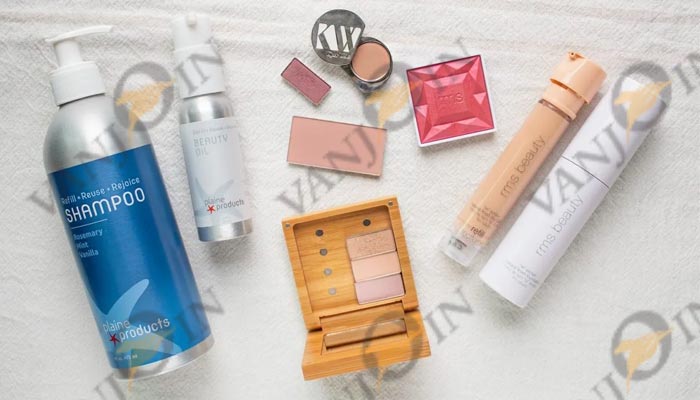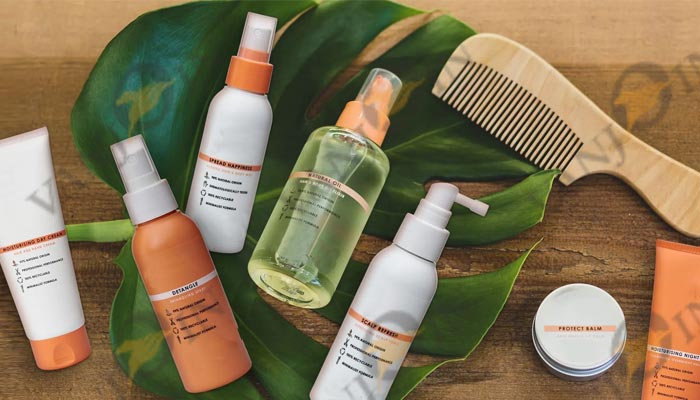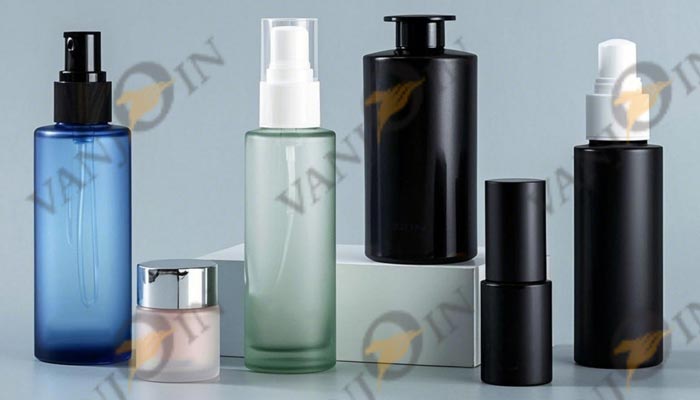Ultimate Guide to the Top 10 Surface Treatments for Cosmetic Containers
There are numerous surface treatments for cosmetic containers. Currently, there are 10 common techniques: Silk Screening, Hot Stamping, Labeling, Coating, Frosting, Shrink film, Water Transfer Printing, Electroplating, Anodized Aluminum, and Engraving. The above 10 surface treatments are primarily intended for glass and plastic bottles and jars, while metal and ceramic containers can utilize a wider range of surface treatment techniques.
The first six—silk screening, hot stamping, labeling, coating, frosting, and shrink film—are the most widely used. These methods are well-established, cost-effective for brands, and can accommodate various design needs.
When choosing surface treatments for cosmetic containers, many factors need to be considered, such as the cost of these treatments and how different materials affect the visual effect.
As a manufacturer with over ten years of experience in the cosmetic container packaging industry, we have compiled a comprehensive guide to help you select the most suitable surface treatment for your cosmetic containers, ensuring your product design achieves the desired texture and visual appeal.

Key Factors to Consider When Selecting Surface Finishes
Cost Structure
Different surface treatments have different cost structures. For example, the cost of silk screening is generally independent of order quantity and is calculated based on the number of colors and printing surfaces.
In contrast, the cost of labeling is related to your order quantity and also depends on factors such as the material of the label paper and the printing technique used on the label’s surface.
Compatibility of Bottle Material and Surface Treatments
Different surface treatments are suited to different bottle materials. For example, printing finishes vary between PET and PE bottles. We generally advise against large color block printing on PE squeeze bottles, as the softer PE material may lead to poor adhesion and eventual peeling, negatively impacting the consumer’s experience over time.
Complexity of surface finish Process
Different finish processes have varying levels of automation and production workflows, which impact production efficiency and lead times.
For example, silk screening is generally more efficient and has faster lead times compared to water transfer printing and coating. This is because silk screening has a higher level of automation, while water transfer printing and coating require more manual handling and longer drying times.
Chart of Key Attributes for 10 Surface Finishes
| Attribute | Silk-screening | Hot-stamping | Labeling | Coating | Frosting |
| Suitable Material | Almost all materials | Plastic, Metal | Almost all materials | Almost all materials | Almost all materials |
| Cost Structure | The number of colors and printing surfaces | Hot stamping area, pattern complexity, order quantity, etc. | Label material, size, quantity, adhesive type, etc. | Spraying material, the size of the containers, number of colors, etc. | The size of the container and the order quantity. |
| Applicate On | The body of the container | The body of the container | The body of the container | The body of the container | Cap, Pump and the body of the container |
| Complexity | Moderate | Moderate | Simple | Simple | Simple |
| Aesthetic | Moderate | Moderate to Premium | Moderate | Moderate to Premium | Moderate |
It is important to note that the application of surface treatments on different materials is not absolute. In fact, glass can also be subjected to hot stamping; however, the process is more complex compared to plastic. It requires a pre-coating or spraying of paint on the glass bottle before hot stamping, and the adhesion of the gold foil on glass may not be as strong as on plastic.
| Attribute | Shrink film | Water Transfer Printing | Electroplating | Anodized Aluminum | Engraving |
| Suitable Material | Almost all materials | Almost all materials | Plastic, Glass | Metal | Almost all materials |
| Cost Structure | The size of the container, film material, and order quantity | The material of the container, pattern complexity, etc | The size of the container, colors, order quantity, etc. | The market price of aluminum, order quantity. | The material of the container, pattern complexity, etc. |
| Applicate On | The body of the container | The body of the container | Pump, and the body of the container | Cap and Closure | Cap, and the body of the container |
| Complexity | Simple | Complex | Complex | Complex | Intricate |
| Aesthetic | Basic | Premium | Moderate to Premium | Moderate to Premium | Premium |
In addition to bottle shape design, surface treatments are key to highlighting product features. As a beauty product manager, you don’t necessarily need to rely on unique bottle shapes to make a lasting impression on consumers. In fact, the same bottle shape can achieve different visual effects with various surface treatments.
Instead of investing in custom molds for unique bottle shapes, it may be more cost-effective to work with your design team to plan the bottle’s appearance. Simple surface treatments can offer better cost efficiency, allowing you to maximize the product’s visual impact at a lower cost.

Case Studies In Surface Finishes
Silkscreen Printing
Silkscreen printing is a common printing finish that transfers ink onto the surface of bottles using a silk screen template. It is used to print patterns and text on bottles, typically using UV ink, which dries and cures quickly under UV light, and the printed patterns and text are non-reflective.
The advantages of silk screen printing include:
* High Durability: The patterns and text are highly resistant to wear, making them suitable for long-term use.
* Vivid Colors: It allows the use of multiple colors, resulting in vibrant and eye-catching designs.
* Versatility: It is applicable to different materials and bottle shapes.
In the silkscreen printing process, it is important to note that for cylindrical bottles, only one pass through the machine is needed. However, for irregularly shaped bottles, such as square bottles, printing on both sides requires additional machine energy. Consequently, the cost of double-sided silkscreen printing for square bottles is typically higher than for cylindrical bottles.
Hot-Stamping
Hot stamping is actually a type of printing process that transfers metallic colors onto the surface of bottles using heat and pressure. It is commonly used to add high-gloss and metallic-colored patterns and text, enhancing the visual appeal of the product.
The advantages of hot stamping are:
* High-End Visual Effect: Provides a high-gloss finish, creating luxurious effects for patterns and text.
* Durability: The metallic foil layer, once heated and applied, does not fade with long-term use.
* Detailed Precision: Capable of presenting fine patterns and text on the bottle.
When choosing hot stamping, it is important to consider the adhesion between the bottle material and the metallic foil. If hot stamping is to be applied on materials like glass or bamboo, it is crucial to assess whether the printed patterns and text will withstand abrasion during transportation and long-term use.
It is also worth noting that hot stamping can produce effects beyond just gold or silver patterns. Hot stamping comes with a dedicated color chart, allowing for the selection of different colors and textures to achieve various metallic finishes.

Labeling
Label paper is typically made from paper or plastic materials, but there are various surface finishes and adhesive methods for labels. The adhesion of the label also depends on the material of the bottle or jar. For instance, labels on PE bottles are usually made from PE materials to ensure better adhesion to the bottle surface.
The advantages of labeling are:
* Cost-Effective: Labeling is generally less expensive than other surface treatments and is easier to apply.
* Highly Flexible: Labeling is not restricted by the shape or material of the bottle, making it widely applicable in the market.
* Easy to Replace: Labels can be updated and replaced more easily than other methods, facilitating adjustments to product information.
Spray Coasting
Spray coating is a process that uses a spray gun or spray equipment to apply paint in an atomized form onto the bottle, creating an even coating on the surface. Spray coatings come in various colors and finishes, including sandblasting, oil spraying, and painting, allowing for a range of colors and texture effects.
The advantages of spray coating are:
* Diverse Visual Effects: Achieves different gloss levels, colors, and textures.
* Wide Coverage: Suitable for bottles of various shapes and materials, providing an even coating.
* Rapid Production: The spray coating process is relatively quick, making it suitable for large-scale production.
Compared to electroplating, spray-coated colors tend to be somewhat darker. In the application of cosmetic bottles, there are several spray techniques available, including internal spraying on the inner bottle, external spraying on the outer shell, and surface spraying on the bottle body. The specific spray technique should be chosen based on the bottle’s structure and design requirements.
Frosting
Frosting is a process that creates a semi-transparent, soft, and matte effect on bottles. Depending on the bottle’s material, different methods are used for frosting. For plastic bottles, the effect is typically achieved through injection molding or spraying. Acid etching or spraying is commonly used for glass bottles.
The injection-molded frosting is usually applied to caps and pump heads during the molding process, eliminating the need for additional processing. Acid etching involves immersing the glass in an acid solution, which reacts with the surface and removes the smooth layer to create a frosted effect.
The advantages of frosting are:
* Elegant Appearance: The frosting effect is soft and provides a refined texture for packaging.
* Enhanced Tactility: Frosting adds texture to the bottle’s surface, making it more appealing to the touch.
* Reduced Reflection: Frosting minimizes light reflection, making the contents of the bottle appear more stable under various lighting conditions.
It is important to note that frosting cannot easily cover defects such as black spots or cracks on the bottle. If the received bottles (without any surface decoration) have significant defects, alternative methods like labeling or spray painting should be considered to address these issues.
Shrink Film Bottle
Shrink film is a packaging process that adheres a plastic film to the surface of a bottle through heating. For products that require high decorative value, complex packaging designs, and full coverage, using shrink film technology offers the best cost-effectiveness.
The advantages of shrink film technology are:
* Full Coverage Decoration: Shrink sleeves can cover the entire surface of the bottle, regardless of its shape and curves.
* High-Quality Printing: This process can achieve high-resolution images and vibrant colors, providing excellent visual appeal.
* Protective Function: Shrink sleeves protect the bottle surface from scratches and wear, and can also include anti-counterfeiting features.

Water Transfer Printing
Water transfer printing is a process that transfers patterns from a water-soluble film to the surface of a bottle. Similar to shrink film, it can achieve high-precision patterns and text coverage on complex bottle shapes and curves. However, the visual effect and texture presented by water transfer printing appear much more premium compared to shrink film printing.
The advantages of water transfer printing are:
* High-Precision Decoration: It can achieve exquisite pattern coverage on complex shapes and curves.
* Diverse Designs: It can realize multiple colors and complex designs, including gradients and 3D effects.
* High-End Visual Effect: It provides an elegant and premium appearance, making it suitable for cosmetic bottles made of glass and bamboo materials.
Electroplating
Electroplating is a process that uses electrolysis to coat the surface of a bottle with a layer of metal. This technique not only provides a high-gloss metallic appearance but also can create a brushed metal texture, enhancing the product’s feel and visual appeal.
The advantages of electroplating are:
* High Gloss Finish: Delivers a brilliant metallic shine, enhancing the product’s visual impact.
* Versatility: Electroplating can achieve various metal colors and textures, adding to the design options.
* Durability: Electroplated surfaces offer superior resistance to wear and corrosion compared to ink printing, making them suitable for long-term use.
Electroplating is typically used on plastic and metal bottles, and less commonly on glass. This is because the process of electroplating glass is more complex and expensive.
Although glass can be electroplated after pre-treatment, the adhesion of the electroplated layer on glass is generally weaker than on plastic or metal, necessitating extra care during use and transportation to avoid damage.
Anodized Aluminum
Anodized aluminum involves an electrochemical process that forms an oxide layer on the surface of aluminum to enhance its corrosion resistance and appearance. This oxide layer can be dyed, allowing for various metallic colors. This process is commonly used for bottle caps, which are often fitted with a plastic lining inside.
Advantages of Anodized Aluminum:
* Durability: While both methods provide a metallic appearance, anodized aluminum is more abrasion-resistant compared to electroplating.
* Natural Gloss: The metallic finish of anodized aluminum appears more natural than electroplating.
* Environmental Friendliness: The manufacturing process generates less waste, making it more environmentally friendly.
Engraving
Engraving is a process of creating patterns and text on the surface of bottles using mechanical, laser, or chemical methods. Depending on the material of the bottle, different engraving methods may be used, including etching and laser engraving. Typically, laser engraving is used for metal, plastic and bamboo packaging, while both laser and chemical etching are used for glass.
Advantages of Engraving:
* Eco-friendly: Like silk screening, laser engraving produces text and patterns with minimal material and chemical consumption, making it more environmentally friendly.
* Durability: Engraved patterns are highly durable and resistant to fading.
* High Precision: Capable of achieving very fine and complex textures and designs on the bottle surface.
Laser engraving is commonly used on glass and metal cosmetic bottles, but it is rarely used on plastic bottles due to less favorable results and lower cost-effectiveness.

Conclusion
As a manufacturer with over 16 years of experience in the packaging industry, we are well-versed not only in the production processes of plastic cosmetic bottles but also in their surface treatment techniques. Drawing from numerous past production cases and advanced equipment, we are confident in our ability to create packaging products that meet your ideal expectations.
Related Information
